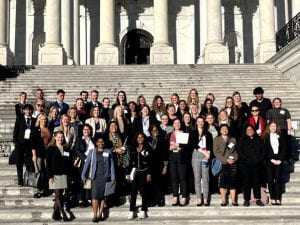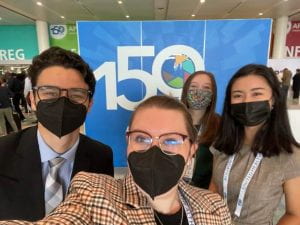April 12, 2024
Raimi Liebel | UAB Graduate Student, Magic City Acceptance Center Intern
LHC is proud to feature student work on relevant policy issues such as this one. If you are a UAB student interested in contributing to Policy Watch publications, please email lhc@uab.edu.

The concept of DEI (diversity, equity, and inclusion) has become a political hot-button in recent years. DEI in higher education refers to programs, training, events, organizations, and spaces that are centered around historically marginalized identities. Higher education institutions have been incorporating DEI measures since the 1960s following the civil rights movement. DEI is not a new concept and has been integrated into universities and colleges across the country. Historic legislation such as Title IX, the Americans with Disabilities Act (ADA), and Deferred Action for Childhood Arrivals (DACA) have contributed to the increase in DEI offices, services, and organizations at higher education institutions across the US over the past 60 years.
Since 2022, more than 40 anti-DEI bills have been proposed in the US. Texas, Florida, North Dakota, South Dakota, Texas, Utah, and now Alabama have all signed bills into law limiting or banning DEI offices at higher education institutions. Representative Will Barefoot introduced SB 129 to the Alabama Senate on February 20th, which restricts state-funds from being used for DEI offices and sponsored DEI programming, potentially including student organizations such as USGA and SJAC. The University of Alabama at Birmingham alone has 12 DEI offices and more than 150 student organizations that could face state funding loss. SB 129 moved from its first reading to being passed in the Senate within three legislative days before was signed into law by Governor Kay Ivey on March 19th.
According to a 2023 mixed methods analysis, “Students of color thrive and achieve more at higher educational institutions where there are deliberate efforts made to provide diversity, equity, and inclusion activities.” The link between student success, belonging, and graduation rates and DEI programming has been demonstrated in several studies. Academic communities fear that legislation of this kind may prevent students from enrolling in higher education institutions where DEI restrictions are present. Reduced staff and student enrollment or retention can result in economic effects on institutions across the state, especially those that use diversity as an incentive to drive recruitment. DEI efforts at higher education institutions help facilitate students’ learning from a variety of thoughts and perspectives, which has proven to increase cognitive development and cross-cultural empathy.
DEI has been attributed to improved student enrollment, retention, and graduation rates. A 2023 mixed methods study identified significant positive correlations between perceived campus climate, diversity in staff/faculty, curricular diversity, and interactional diversity and college student re-enrollment. Also, explicit DEI policies in workplaces led to more diversity in employment, accounting for 46% of the variance reported in the study. Higher education institutions and workplaces benefit from recruiting and retaining diverse staff.
Attainment of a college degree is positively correlated with improved health outcomes and behaviors. Those who attain a bachelor’s degree or higher earn $1.2 million more than their high school-educated peers over their lifetime, and college degree holders are almost twice as likely to have employer-sponsored health insurance (ESI). ESI covers approximately 60.4% of the US population and is often the most affordable and comprehensive option for workers.
Degree attainment and long-term health are correlated, and historical trends showcase certain populations have lower enrollment and retention rates. The U.S. Department of Education notes that the “participation of underrepresented students of color remains a problem at multiple points across the higher education pipeline including at application, admission, enrollment, persistence, and completion.” DEI bans compounded with lower college enrollment could lead to increased health disparities for marginalized communities. Decreasing diversity in classrooms, workplaces, and communities decreases collaboration, cultural exposure, and productivity.
Other facts of note:
- Racial disparities in student enrollment and degree completion are well documented. Alabama’s population is 26.8% Black, yet Black students make up 5.3%, 21.3%, and 9.3% of UA, UAB, and UAH’s student populations respectively.
- LGBTQIA+ students, students with disabilities, and low socioeconomic status students all report lower comparative enrollment rates in higher education institutions.
- UAB alone generates $12.1 billion and “for every $1 in state funding received by the institution, UAB generates $39.35 in economic impact that is returned back to the state.” Negative public perceptions and fear of contradicting legislation have been linked to lower attendance and loss of university funding.
- The life expectancy of college degree holders is seven years longer on average than non-degree holders.
Click here to view this brief in PDF format.
 In October, I attended Society for Public Health Education’s
In October, I attended Society for Public Health Education’s 

